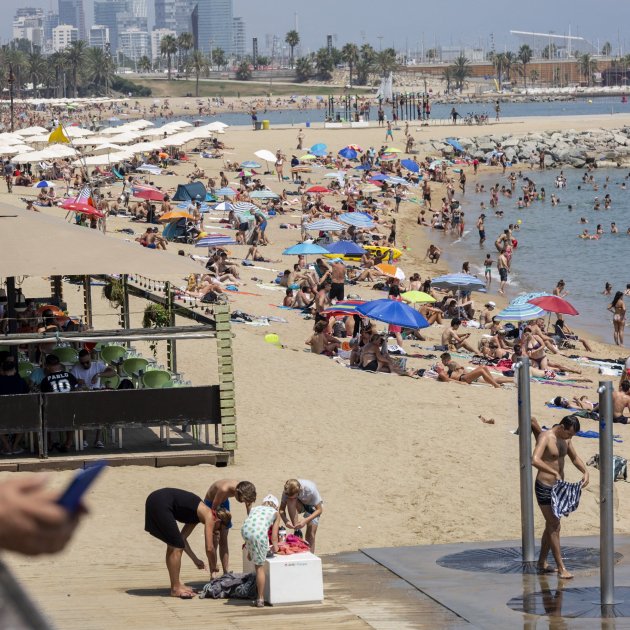The swimming season on Catalan beaches is underway. The spring warm-up - when water temperatures heat up from about 14 degrees Celsius in April to the mid-20s by August - is well underway. It is the ideal time to cool off in the water of the coast of Catalonia. It is estimated that there are more than 300 beaches monitored by the Generalitat throughout the territory.
Before going to the beach, however, it is important to check the conditions: the colour of the flag and any restrictions or even closures of accesses or other measures. For this information, you can consult this viewer from Civil Protection, showing the real time situation of each beach. You can search by specific municipality or beach:
Viewer indicators
It's in Catalan but quite intuitive to navigate. From the start window on Catalonia, you can select one of the five coastal zones, starting at the French border with Costa Brava in the north, through the Maresme to the Barcelonès beaches in the middle, then via Garraf and into the Tarragona region, where the Costa Daurada beaches are found. Navigate and click on a flag to enter the screen for the beach. The beach flags are colour-coded as follows:
- Green: Swimming is allowed.
- Yellow: Caution should be exercised when swimming.
- Red: Swimming at the beach is prohibited.
- Gray or white: No information available on swimming conditions.
- Orange: The beach is at full capacity .
Secondly, the top left of the information screen for each beach also shows whether it has certifications (blue flag, the Q Tourist Quality flag or the EMAS flag), as well as whether there is adapted parking near the area, ramps adapted for people with motor disabilities or adapted showers and toilet support service. You can also click to see the hours for that lifesavers are on duty (socorrista). The red pin will take you to the location on Google Maps.
Then, check out the icons used to show sea and surf conditions. The distinct symbols refer to a dead calm sea (without waves), undulating (waves from 0 to 0.1 metres), small waves (waves from 0.1 to 0.5 m), moderate waves (from 0.5 to 1.25 m), large waves (from 1.25 to 2.5 m), strong swell (from 2.5 to 4 m), very rough seas (from 4 to 6 m), and the last three showing respectively 6 to 9 metre swells, 9 to 14 m, and finally, when swells exceed 14 metres.
Below the sea conditions is the icon for water quality, depending on whether it is completely clear or has a small or large densities of suspended particles that make the water less transparent.
Information on the presence of jellyfish is also provided. If a purple jellyfish icon is listed, the beach is considered safe for bathing, but caution should be exercised as there may be small stinging jellyfish. If the jellyfish icon is yellow, great caution is recommended because stinging jellyfish are present in small or large numbers. If it appears in red, the advice is not to swim because it could be a serious health risk.
Swimming tips
Apart from checking beach conditions before going there, once you arrive at the beach itself, it is essential to always follow the directions of the lifeguards. Only swim when you're feeling physically well and not straight after a meal, enter the water gradually, wetting your limbs first. In addition, please don't overestimate your swimming abilities. As well, avoid areas of currents and do not dive in head-first.
The use of sunscreen is essential, as well as regular hydration by drinking water and avoiding exposure to the sun for hours on end. Enjoy!
Main image: A beach in Barcelona. Sergi Alcazar.
